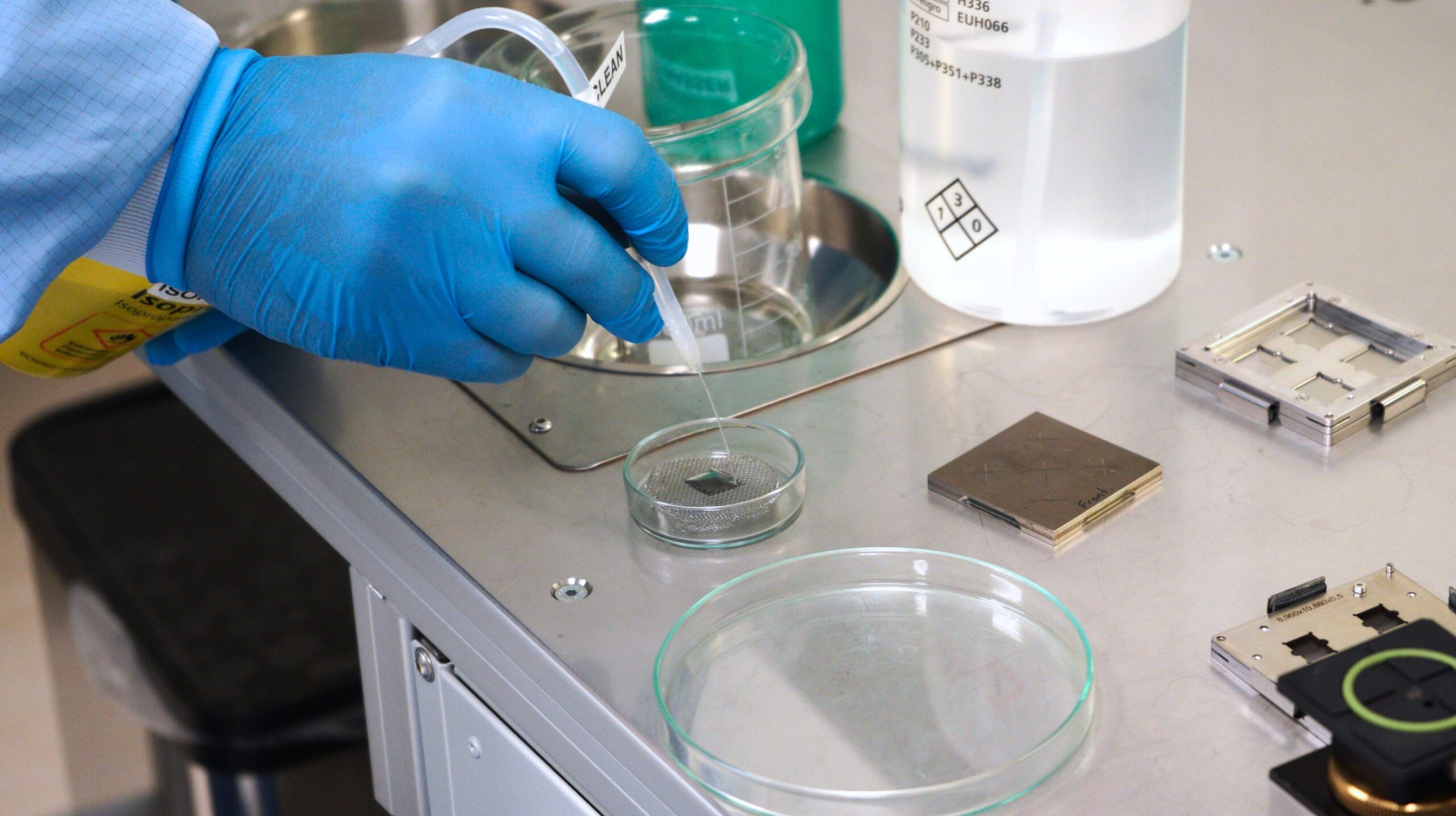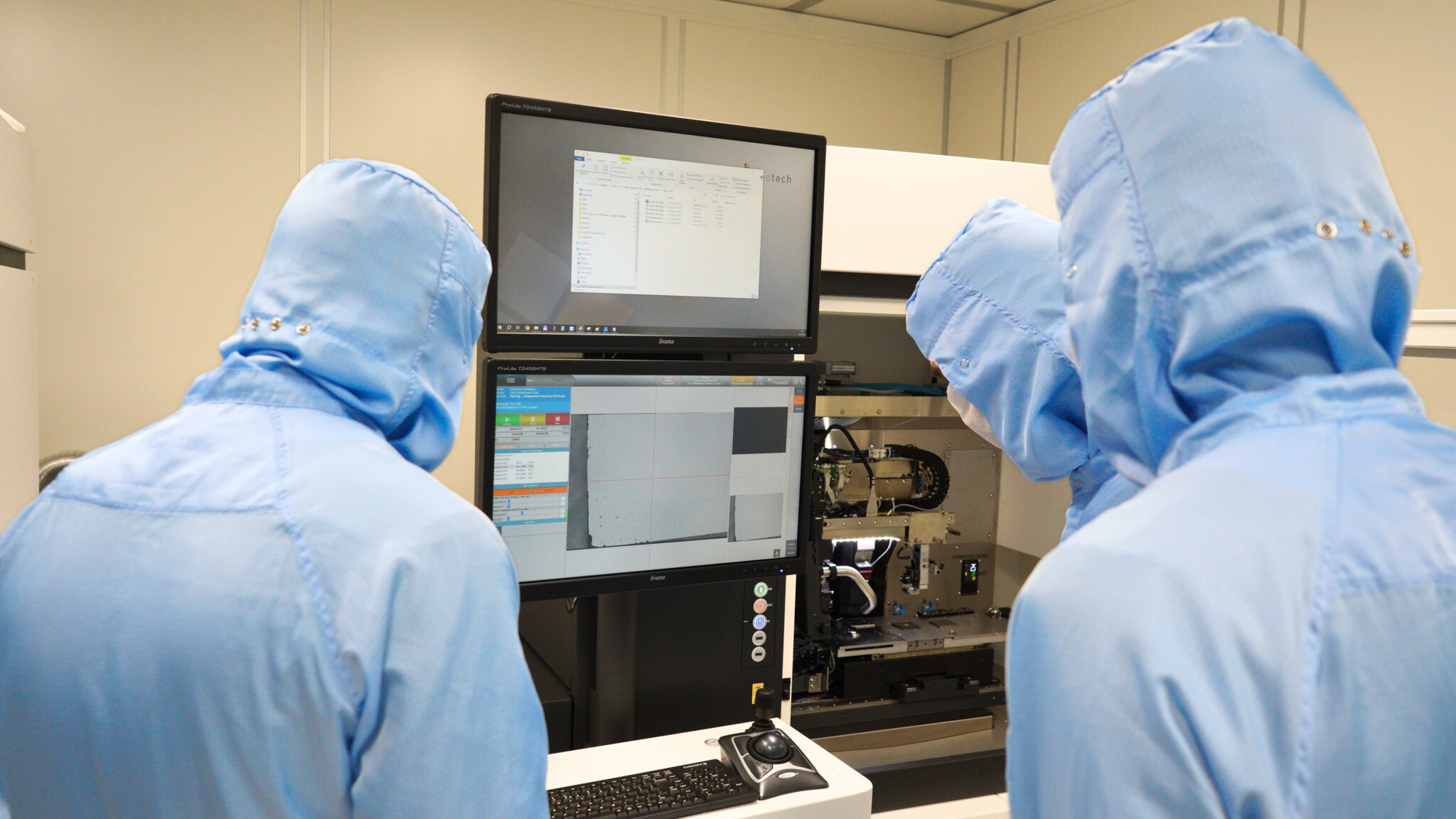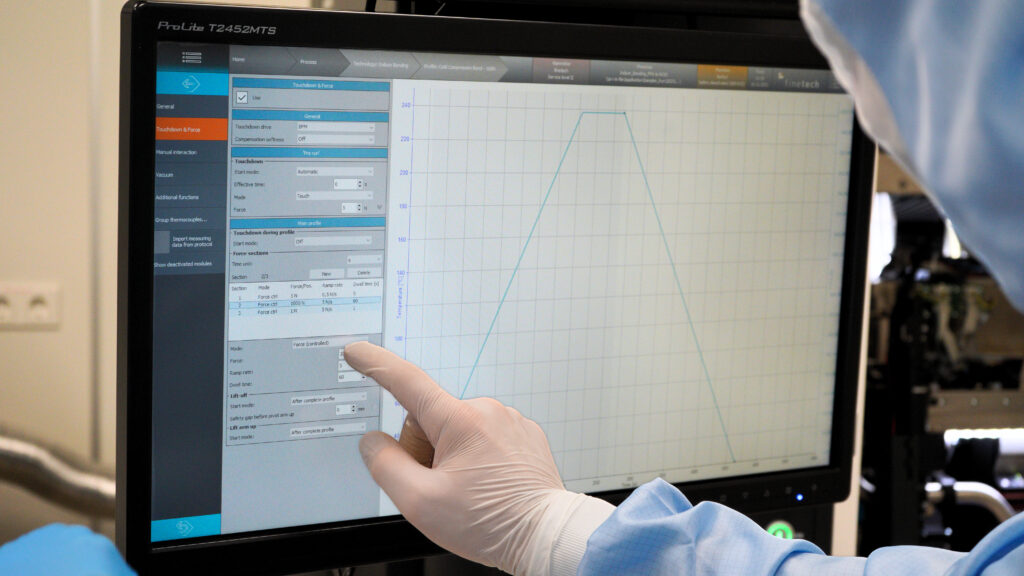Is your goal to produce large format, high density infrared thermal imaging sensors that meet today's industry requirements?
Is your goal to produce large format, high density infrared thermal imaging sensors that meet today's industry requirements?
Due to the beneficial characteristics, the preferred way of hybridization to build IR thermal imaging sensors is by using fine pitch micro Indium bump array interconnect bonding. However, industry specialists are frequently pointing to very specific challenges associated with Indium bump bonding.
The challenges most frequently stated tend to be excessive preparation times, caused by lengthy machine setup and programming, material cleaning and co-planarity adjustment, trouble with inconsistencies in the bonding process, again due to lacking co-planarity and surface flatness, and a generally high complexity in maintaining yield and throughput impacted by insufficient bonding results. As a result, bonding processes are not automated, inconsistent, and manufacturing time and costs increase.
In order to tackle these challenges and provide the industry with an easy-to-use, efficient and reliable solution, Finetech has developed standardized Indium bump interconnect/hybridization processes:
- Fully Automated Indium bonding process, four or more assemblies per cycle
- Cold Compression bonding up to 1000N
- Thermal Compression bonding below 100°C
- Formic Acid Indium oxide reduction below 220°C + Cold/Thermal Compression Bonding in an inert gas environment
- Formic Acid reflow bonding down to 0.05 N PID Force controlled bond
Available for both semi-automated and fully automated die bonder systems!
Finetech hybridization process solution for IR sensor devices
From first sample to successful bonding in less than 6 hours
Consistent 99%+ pixel yield
Cryogenic IR imaging applications
Our solution in detail

Tweezer-safe handling and cleaning kit
Stand-alone material cleaning and preparation kit for tweezer-safe die handling, as well as chemical cleaning of photoresist and formic acid oxide reduction on Indium bumps.

Sub-micron flatness and co-planarity
<1 µm flatness and co-planarity on both heated and cold die handling and bonding surfaces, as well as – <1 µm passive tool leveling for co-planarity in bondline thickness.

Up to 50 nanometers alignment accuracy
Achieve sub-micron bump-to-bump post-bond alignment of 350K+ Indium Interconnects.

Precision temperature management
Our die handling and bonding surfaces heat up up to 450°C. The solution is able to keep within <1K temperature control. Maintaining precise temperature prevents thermal stress on bond and sensor die.

Controlled bonding environment
Prevents contamination that could compromise co-planarity, bond line gap, alignment and mechanical or electrical connectivity. We offer Nitrogen (N2) and Formic Acid bonding environments within a closed cell die bonder.

Fully automated bonding
Fully automated die bonding process with automated system calibration to ensure highest process repeatability.

Cleaning Station?
Our technical paper provides an insight to the technology behind infrared thermal imaging FPA sensors, including their operating principles, construction, and applications, as well as the challenges and their solutions in the IR FPA flip chip compression die bonding process.



Talk with our experts
Setting up a new indium bump-to-bump process? Need some support to reduce development time and costs? Book a 45-minutes consulting session free of charge with our product and application specialists to discuss how our solution can help you to optimize your processes.

Michael Wolf
Head of Application

Martin Rogge
Head of Product Management

Travis Scott
Business Development
*depending on system and configuration
